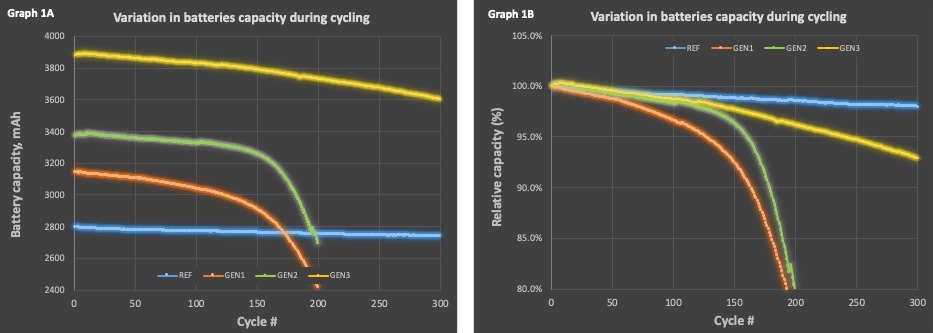Silicon-Based Anode Batteries Achieve 3,606 mAh with 93% Capacity Retention after 300 Cycles
posted on
Oct 08, 2024 08:18AM
Achieved final critical milestones, completing a successful silicon pour

HPQ Silicon Inc. (TSX-V: HPQ), a Quebec-based leader in green silicon engineering, has made significant strides in battery technology, positioning itself as a potential game-changer in the energy storage market. In partnership with its French affiliate, Novacium SAS, the company recently announced groundbreaking results from its 18650 lithium-ion batteries, which utilize advanced silicon-based anode materials. This development could provide a major boost for investors eyeing the future of sustainable energy solutions.
Background and Context
HPQ Silicon has long been at the forefront of technological innovation in the materials sector, with a mission centered around developing green processes for producing silicon-based materials crucial to the growing renewable energy sector. Its latest achievement comes from Novacium SAS, a company focused on R&D for next-gen energy storage technologies.
Since its founding, HPQ has forged key partnerships with top-tier technology firms, including PyroGenesis Canada Inc., and has consistently pursued breakthroughs in sustainable silicon manufacturing. With the surge in global demand for energy storage solutions, particularly in the electric vehicle (EV) and renewable energy industries, HPQ’s innovations come at a critical time.
Boosting Battery Performance and Coulombic Efficiency with Silicon-Based Anodes at 300 cycles

Key Highlights and Advantages
In a press release dated October 8, 2024, HPQ Silicon unveiled that its 18650 batteries—integrating Novacium’s GEN3 silicon-based anode material—have achieved remarkable performance metrics:
These advancements signal a leap forward in energy density, battery lifespan, and long-term performance, positioning HPQ to become a leading player in the global battery market. Investors should take note of the company's ability to produce batteries that outperform industry standards, as this could dramatically influence its market share and investor returns.
Potential Impact and Significance
The implications of HPQ Silicon’s progress are profound, especially as demand for efficient, long-lasting batteries continues to rise across various sectors, from consumer electronics to electric vehicles. By extending the lifespan and capacity of batteries through silicon-based anode materials, HPQ Silicon addresses a critical bottleneck in energy storage technology.
If projections hold true, HPQ's GEN3 batteries could match, if not exceed, the performance of graphite batteries by the 1,000-cycle mark, unlocking new applications in EVs and grid storage, where durability and capacity are paramount. With HPQ’s SiOx continuous production technology also advancing, the company is well-positioned to meet both performance and sustainability targets.
Expert Opinions and Analysis
Novacium COO Dr. Jed Kraiem expressed confidence in the company's recent results, stating, “Our battery knowledge and silicon anode materials work have attracted industry-wide attention. This validates the potential of our technology to enhance energy density and battery life.”
CEO Bernard Tourillon also highlighted the broader significance of HPQ’s innovations: “Our progress in both battery cycling results and silicon manufacturing marks a pivotal step in our journey to become a key supplier of next-generation energy materials.”
Such endorsements from industry leaders suggest that HPQ’s technologies are not only viable but also on track to shape the future of battery development.
Challenges and Considerations
While HPQ Silicon’s recent advancements offer exciting possibilities, challenges remain. Scaling up production of silicon-based anode materials, particularly in a market dominated by established graphite technologies, could prove complex. Additionally, securing the necessary regulatory approvals and navigating a competitive market landscape will require careful strategy.
However, HPQ’s continued investment in R&D, coupled with its focus on sustainability and reducing production costs, puts the company in a strong position to overcome these hurdles.
Conclusion
HPQ Silicon’s latest breakthrough in silicon-based anode materials presents a significant opportunity for both the company and its investors. With battery capacity and efficiency at the forefront of global innovation, HPQ’s advancements could set new performance standards in the industry. As the company pushes forward with its patent for SiOx production and further optimizes its battery technologies, it stands poised to capture a growing market demand for high-performance, sustainable energy storage solutions.
Investors and industry leaders alike should closely monitor HPQ’s progress as it seeks to become a leading player in the next generation of battery technology.
View original release:
https://hpqsilicon.com/wp-content/uploads/2024/10/HPQ_PR_GEN3_300C_OCT_8_24_V_CL4.pdf